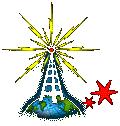
<< radio home
<< index
by disinfoniacs #69 & #1
>>>>
Moving on from the constraints, let us delve into the realm of frequencies. It may come as a surprise, but each state or region has a specific "band plan" that outlines the recommended transmit and receive channels and additional parameters for auxiliary and repeater stations. These band plans are created and maintained by Volunteer Frequency Coordinators, who are recognized by local amateur radio operators and are responsible for preventing interference among repeaters.
These coordinators are selected by the amateur radio operators within a specific local or regional area, and can easily be located through a web search using the state name and "Band Plan" as keywords.

In the realm of ham radio, frequencies can be referred to either by their exact numerical value or by the band to which they belong. For instance, the frequency of 52.525 MHz is located within the 6-meter band, while 146.52 MHz can be found within the 2-meter band. As we remember from T3-Waves, you can determine the wavelength by 300/frequency in MHz.
Which meter band is 52.525 MHz?
Which meter band is 146.52MHz?
Morse code, being a simple and efficient mode of communication, requires a minimal bandwidth to operate. Consequently, specific frequency ranges such as 50.0 MHz to 50.1 MHz and 144.0 MHz to 144.1 MHz are reserved exclusively for continuous wave (CW) transmissions.
Similarly, the frequencies between 219 and 220 MHz are restricted for use by fixed digital message forwarding systems alone.
It is worth noting that the Technician license also affords privilege for communications on VHF and UHF frequencies, which are higher in frequency and commonly utilized for local and regional communications. However, these licensees have limited access to the HF (or High Frequency) bands.
As a Technician class licensee, you are granted phone access to the 10-meter band only, with the frequencies ranging from 28.300 MHz to 28.500 MHz. Additionally, single sideband (SSB) phone may be employed by amateur radio operators within at least some segments of all of the bands above 50 MHz.
It is worth noting that the maximum peak envelope power output for Technician class operators in the HF bands is capped at 200 watts, while frequencies above 30 MHz permit a maximum output of up to 1500 watts.
Bear in mind that certain bands, including segments of the 70-centimeter band, are shared with other services such as the military or services in other countries, and as such, it is essential to exercise caution and avoid interfering with non-amateur stations operating within these portions.
Furthermore, one should exercise caution to avoid accidentally crossing over into another band, as there are several reasons to avoid setting your transmit frequency precisely at the edge of an amateur band or sub-band:
<< previous lesson | next lesson >>
---
<< radio home
<< index
